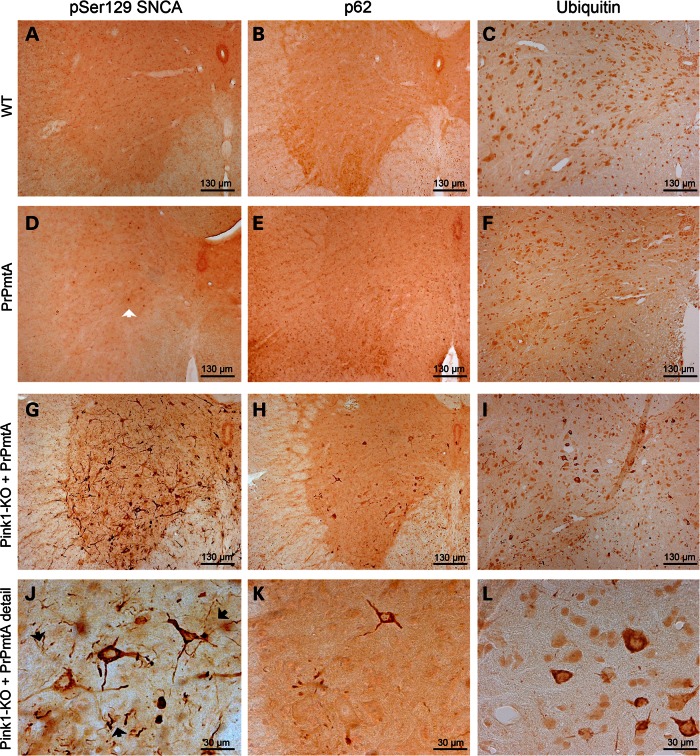Figure 3.
Immunohistochemistry in spinal cord at ages 15–17 months. Bright-field immunohistochemical stainings were performed in age-matched WT-F1-hybrids, PrPmtA and DM mouse (for Pink1−/−, see Supplementary Material, Fig. S3 upper panels) spinal cord (focused on one anterior horn with ventral surface below and midline central canal to the right) in comparison. Protein aggregation was detected by antibodies against phospho-Serine129-alpha-synuclein (pSer129-SNCA), p62 or ubiquitin. In WT spinal cord at old age, no protein aggregates were detected. In PrPmtA, the pSer129-SNCA antibody detected few neuronal nuclei owing to the overexpression of SNCA (3D, open arrow). In DM, strong immunoreactivity throughout the gray substance in neuronal cytoplasm with extension along neurites can be observed. In high-magnification panels (panel row below), the granular and thread-like composition of the signals and the corkscrew-appearance of some immunopositive neurites become apparent (3J, black arrows), as well as the higher sensitivity of the pSer129-SNCA antibody for this pattern.

